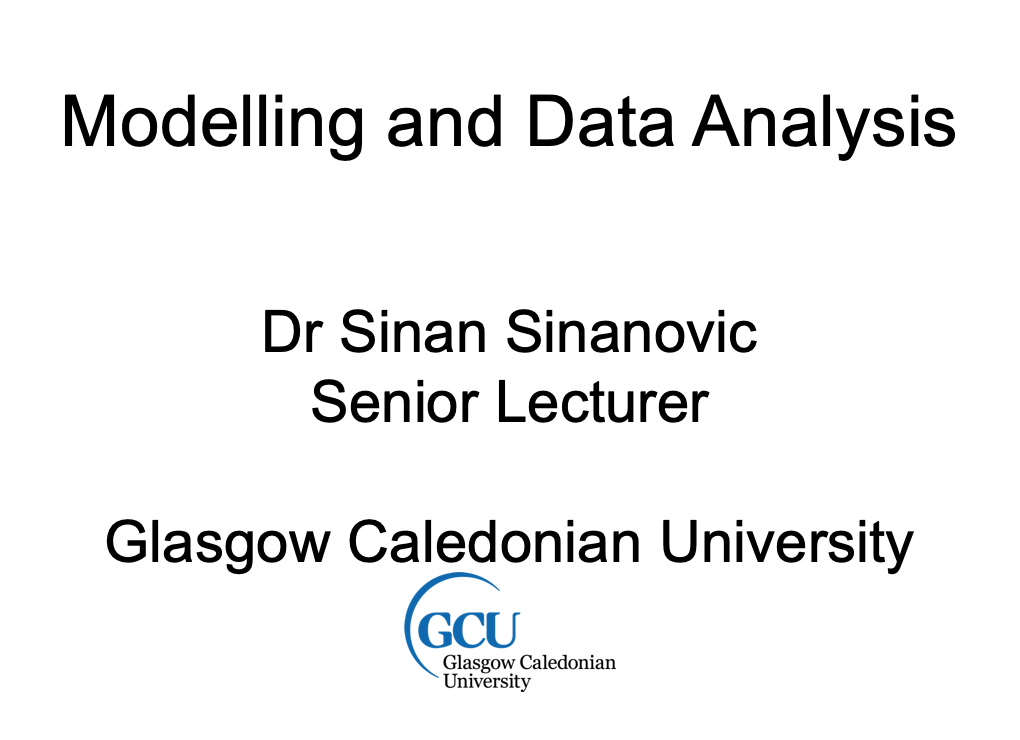-

-
Reflection and Feedback Week
• Reflection and Feedback Week
• How are you progressing with the modules?
• Any issues?
• Coursework/exam preparation
Lecture 6 - Independent Events, Total Probability Law, Bayes’ Rule
• Independent Events,
• Total Probability Law,
• Bayes’ Rule -
Independent Events
- Two events are independent if any one of the following equivalent statements is true:
1. P(A | B) = P(A)
2. P(B | A) = P(B)
3. P(A ∩ B) = P(A)·P(B)- In other words, above statements mean that occurrence of one event has no impact on the probability of occurrence of the other event and we call such events independent
Three Independent Events: definitions
Three events A, B, C are independent if they are
1) pairwise independent:
P(A ∩ B)=P(A)P(B) and
P(A ∩ C)=P(A)P(C) and
P(B ∩ C)=P(B)P(C)
2) and the following holds
P(A ∩ B ∩ C)=P(A)P(B)P(C)
Independent events: example
- Assume the probability that a machine is faulty is equal to 0.01 and that the machines are independently faulty,
i.e. the probability that a machine is faulty does not depend on any of the other machines.
If 5 machines are examined, what is the probability that no faulty ones are found?
- Click to view solution
- Determine the smallest number of machines, N, which have to be examined in order to have probability that no faulty ones are found equal to or less than 0.5
- Click to view solution
Independent events: example - Solution
Let Ei denote the event that the i-th machine is not faulty, i = 1, 2, …,5. Then , P(Ei) = 0.99.
The required probability is P(E1 ∩ E2 ∩ … ∩ E5). From the assumption of independence,
P(E1 ∩ E2 ∩ … ∩ E5) = P(E1)·P(E2)·…·P(E5)
= (0.99)^5 = 0.95
Probability that no faulty machines are found is 0.95
Intuitive result because, to have a chance of spotting unlikely event, many observations need to be taken!
Solution to second example example
Solution: (.99)^N=0.5
N=log(.5)/log(.99) ( log(x^N)=N log(x) )
N=69 (round up to nearest integer)
Check: .99^69=.499
It takes 69 examinations to have about 50% chance to spot a faulty machine! - Two events are independent if any one of the following equivalent statements is true:
-
Total Probability Law
- A and A’ are mutually exclusive events.
It follows that A ∩ B and A’ ∩ B are mutually exclusive and B = (A ∩ B) U (A’ ∩ B)
- Total Probability Law:
For any two events A and B
P(B)=P(A ∩ B) + P(A’ ∩ B)
- Using conditional probabilities, we have total probability law
P(B)= P(B | A) P(A) + P(B | A’) P(A’)
Example: total probability
- Information about product failure based on the stage of process is given below.
• P(failure in first stage)=.1,
• P(failure in later stages)=.01
• P(product is in first stage)=.2
• P(product is not in first stage)=.8 (Why?)
• Find the probability of failure.
- Click to view solution
Example: total probability - Solution
F denotes the event that the product fails and L denotes the event that the product is in the first stage of process.
P(F | L) = 0.1 and P(L) = 0.2, so P(F ∩ L) =
P(F | L) P(L)= 0.02
P(F | L’ ) = 0.01 and P(L’ ) = 0.8, so P(F ∩ L’) =
P(F | L’) P(L’)=0.008
Using total probability law:
P(F) =
P(F∩L) + P(F∩L’) =
P(F|L) P(L) + P(F|L’) P(L’) =
0.02 + 0.008 = 0.028
Because : P(F ∩ L) = P(F | L) P(L)= 0.02 and
P(F ∩ L’) = P(F | L’) P(L’)=0.008 - A and A’ are mutually exclusive events.
-
Bayes’ Rule
- Also known as Bayes’ Theorem, this result relates conditional probabilities to prior probabilities P(A | B) = P( B | A)·P(A) / P(B), for P(B)>0
- The result easily follows from writing conditional probability two different ways
P(B | A) P(A) = P(A ∩ B)
P(A | B) P(B) = P(A ∩ B)
- Two above left sides are equal to each other which gives Bayes’ rule
Bayes’ rule: another way
- From Total Probability Law:
P(B)= P(B | A) P(A) + P(B | A’) P(A’)
- Bayes’ Rule:
P(A | B) = P( B | A)·P(A) / P(B), for P(B)>0
- Bayes’ Rule rewritten:
P(A | B) =
P( B | A)·P(A) /(P(B | A) P(A) + P(B | A’) P(A’))- Useful for calculations!
Bayes’ Rule: Previous Example Continued
- The conditional probability that a product was present in the first stage when a failure occurred is to be determined
Solution:
P(failure when in first stage)=0.1, in short: P(F | L) = 0.1
P(failure when in later stages)=0.01, in short: P(F | L’ ) = 0.01
P(product is in first stage)=0.2, in short: P(L) = 0.2
P(product is not in first stage)=0.8, in short: P(L’ ) = 0.8
P(F)=0.028 (from previous example)
Using Bayes’ Theorem:
P(L | F) = P(F|L)P(L)/P(F)=(.1)(.2)/.028=0.714 - Insert Content Here 6
- Insert Content Here 7